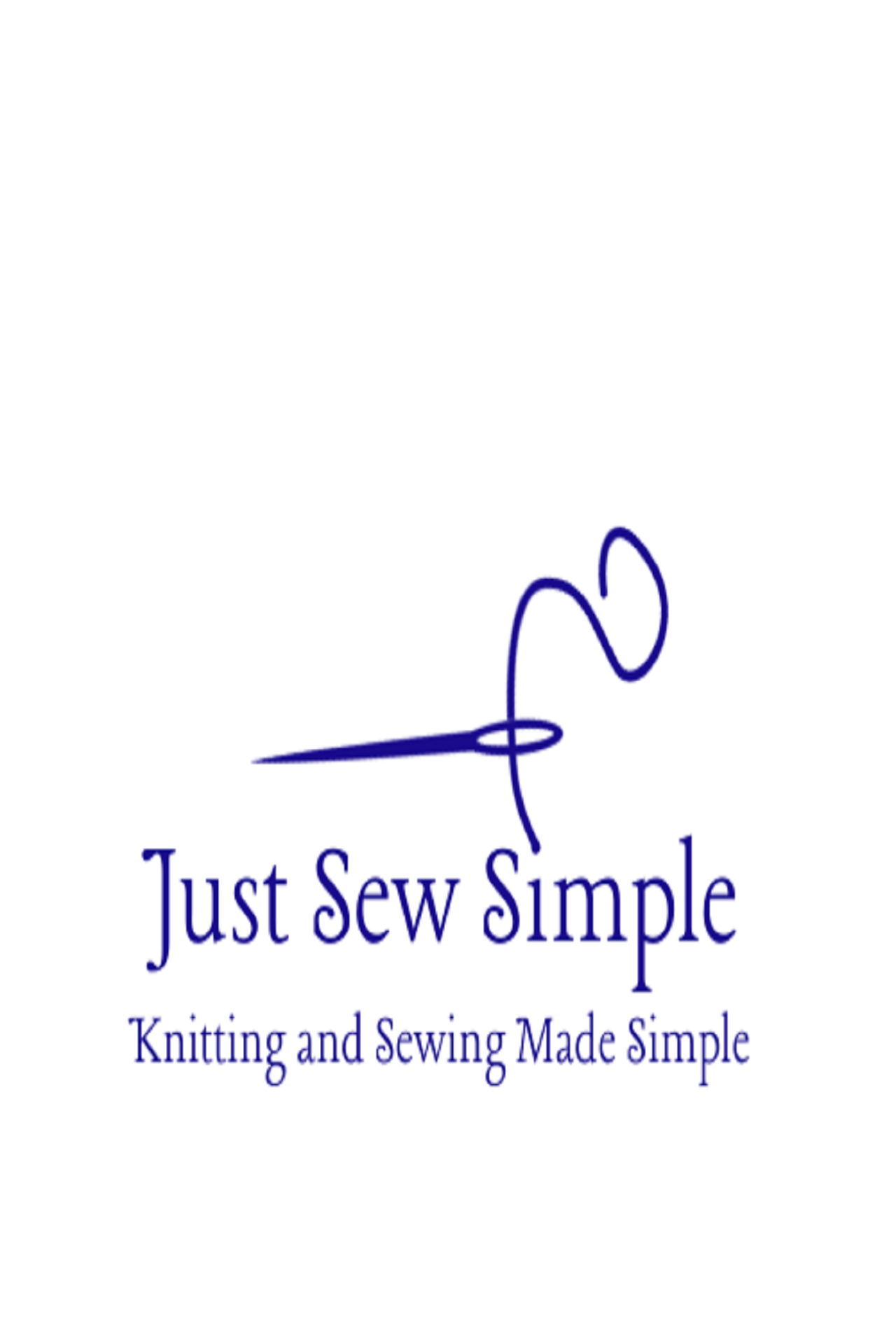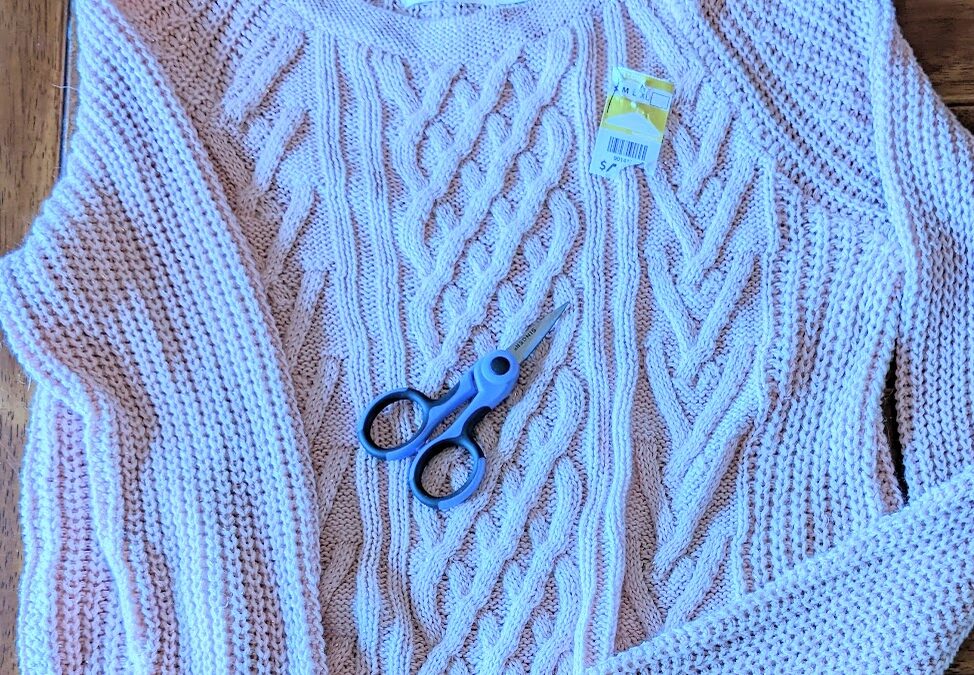Did you know you can recycle yarn from sweaters for a sustainable way to procure your next knitting project? It’s eco-friendly, and unraveling second-hand garments to recycle yarn can be one of the most relaxing and satisfying activities. Like knitting, it’s an easy, meditative way to use your hands while watching your favorite show.
In this article, I’ll provide tips on how to select the easiest sweaters to recycle. Then I’ll explain how to unravel them!
Tips for Your Shopping Trip to Recycle Yarn
Before going to the thrift store, consider what kind of yarn you’re looking for. You might want a particular color for your next project or a specific fiber or weight of yarn. It’s helpful to consider your preferred yarn qualities so that the choices don’t overwhelm you. Then you can focus on finding, for example, one oversized white sweater made of chunky weight yarn to take home.
You may even want to think about which knitting pattern you want to follow with your used wool. For example, select a smaller used garment if you’re going to knit a hat or other small accessory. But if you want to knit a bigger project, you’ll need to consider the size of the used sweater.
At the Thrift Store to Recycle Yarn
Once you arrive at the store, here are a few tips for picking the perfect item to bring home:
Head to the section of the store housing knitted items. This is usually the sweater aisle. However, you might also want to check the areas that house scarves, hats, coats, or blankets.
Stick to your desired color palette. You can scan through many racks of sweaters in a short amount of time with a color in mind.
How to Determine if the Yarn is Appropriate
Once you’ve spotted an item in your preferred color, check that the yarn weight is suitable. Do this by looking at each knitted ‘V’ width. Wider ‘V’s tend to be formed by thicker, chunkier yarn weights like ‘worsted,’ ‘aran’ or ‘bulky’ weights. Thinner ‘V’s are formed from a finer weight of yarn like ‘lace,’ ‘fingering,’ ‘sport’ or ‘DK/double knitting’ weight. Bear in mind that sweaters knitted with finer-weight yarn take longer to unravel.
Note that if you only find finer weight, you can double or even triple up the strands in your project. This helps to form a chunkier weight.
Find Healthy Yarn
- Check for holes and stains. If there are extensive cases of either of these, it will decrease the amount of salvageable yarn you can obtain. It may be worth leaving the damaged garment behind.
- Check that the garment isn’t felted. In other words, the fibers haven’t fused together. Gently pull sections of the knitted fabric apart to ensure you can see between the stitches.
- Check the labels for fiber content to see whether the second-hand garment suits your fiber needs.
- Most importantly, check to make sure that none of the seams on the garment are serged. Instead, all seams should clearly show two pieces of fabric that have been either simply sewn or knitted together.
Serged seams usually appear as narrow, repeated triangles of thread interlocking along and around the raw edges of the two pieces being bound together. Serged seams mean that the fabric may have been knit into a large piece and then cut to shape. This can destroy the yarn’s continuity. Unraveling a serged garment results in lots of short, difficult-to-reuse pieces of yarn, and I don’t recommend it!
This list might look long, but I promise that your checklist for picking second-hand garments will quickly become second nature!
Tips to Recycle Yarn Once Back at Home
So, you’ve picked your favorite garment, and it ticks all the boxes. Congratulations!
Now, all you need is a pair of scissors (a small pair is best) and a seam-ripper (optional). Don’t forget to pick a good TV show to watch while you recycle your yarn.
There are a few easy steps to ensure you reuse the most yarn possible from your recycled garment.
Prep Your Garment
Optional but recommended: Wash the recycled sweater gently in a bucket of lukewarm water and hand soap. Leave for thirty minutes, then gently rinse. Be careful not to rub or twist the fabric, especially if the garment is made of animal fibers. This can cause the garment to felt.) Roll up in a towel to remove all excess water, then flatten and let the garment air dry.
Remove any labels by unpicking sewn stitches with your seam-ripper or, very carefully, with your scissors. NOTE: It’s helpful to keep safe any labels that provide fiber content information or wash instructions.
Remove Your Seams
Unpick all the sewn or knitted seams to separate all garment pieces. For a typical sweater, by the end, you should have five pieces: a front piece, a back piece, two flat arm pieces, and a flattened collar.
- The best way to unpick seams is to find the small knitted ‘V’s that runs alongside one side of the seam. (The other side of the seam will have purl bumps).
- Hold the garment so that the ‘V’s are facing the right way up. Then, push your seam ripper through the two legs of the ‘V’ closest to the edge of the garment, where the seam starts, and break the yarn.
- Next, push the seam ripper into the two legs of the ‘V’ directly below the one you just broke, and pull gently upwards to release the broken yarn.
- Now, pull on the broken yarn strand, and voila! The seam unravels like a dream!
Take one of your flat pieces, holding the garment so that the ‘V’s are facing the right way up. The edge at the top is where you need to unpick.
The easiest way is to cut in a straight line with scissors, as close to that top edge as possible. You are aiming to cut as little fabric off as possible while removing the bound-off edge stitches. Once the stitches are open, it should be easy to unravel your garment!
Ready, Set, Unravel!
To unravel, simply pull on the broken thread. The stitches should unravel row by row, from side to side. If the thread gets stuck, you can unstick it by wiggling the stitches as you pull (with slightly more force) on the thread.
Some fibers are more manageable to unravel than others, for example, cotton, linen, and silk. Animal fibers—especially finer-weight fibers from animals—are often harder to separate as the fibers tend to stick to each other more than plant or plastic fibers.
When unraveling, it’s usually easiest to wind straight into a ball by wrapping the yarn around and round itself as you pull on the open stitches. If there are no holes in the garment, you may be able to get one ball per flat piece of apparel!
Final Few Tips for Recycling Yarn
You don’t have to go it alone when you recycle yarn! Employ any family and friends for short stints of unraveling; the process will go by quickly. If working in a pair, one person can concentrate on pulling the yarn to unravel it, and the other can wind the newly freed yarn into a ball. With this technique, you won’t believe how quickly a sweater turns into reusable skeins!
If you aren’t interested in sitting down for a few hours to unravel a sweater, some Etsy sellers will do just that for you! FrogandHank, ThoughtfulRoseSupply, Natural Recycled Yarn, and RecycledYarnCo are some excellent Etsy shops with great reviews and gorgeous yarn selections.
Bear in mind that unraveling sweaters isn’t a quick job, so you’re paying these lovely sellers not only for the yarn but for their time as well, which makes this option more expensive than doing it yourself. (A sweater quantity of reclaimed yarn will typically cost you $50-100.)
Good luck with your recycling endeavors! Get in touch to let us know if these tips were helpful!

